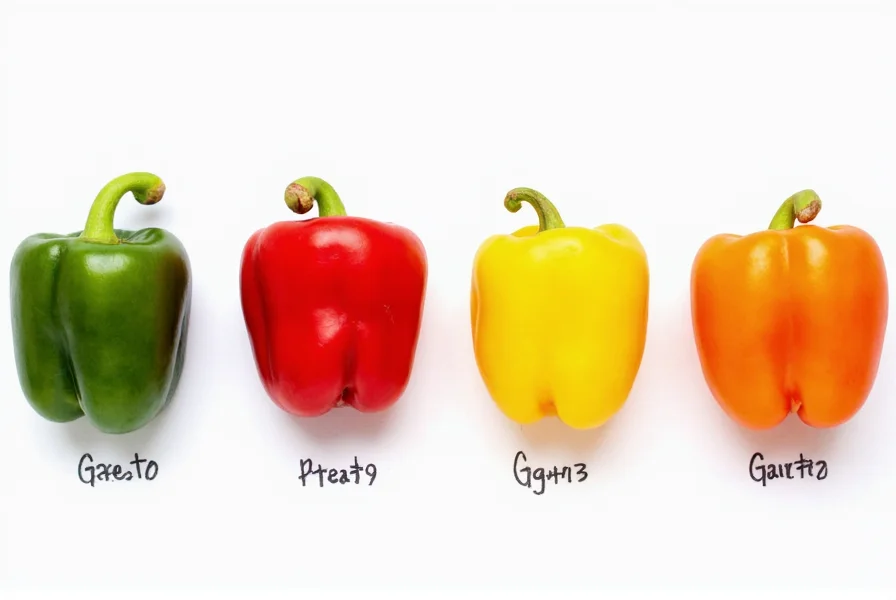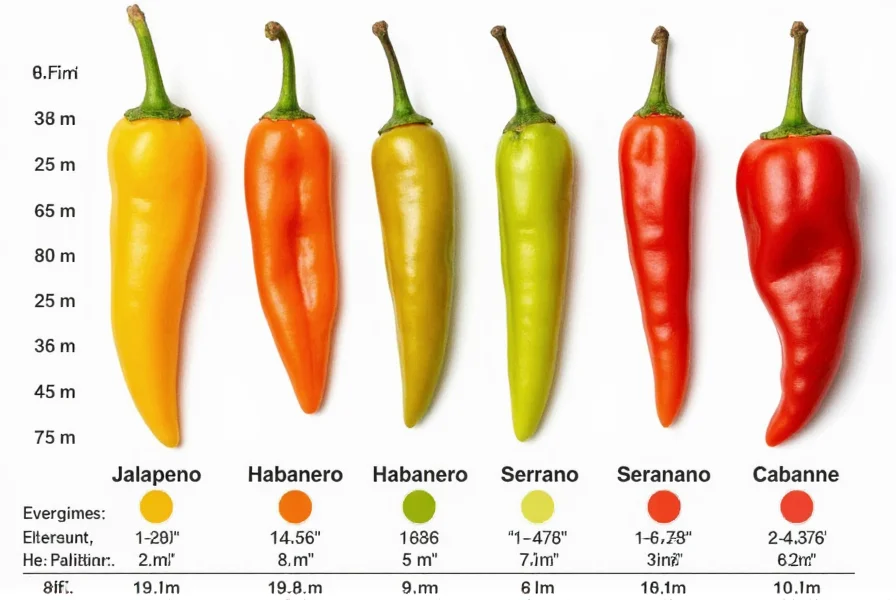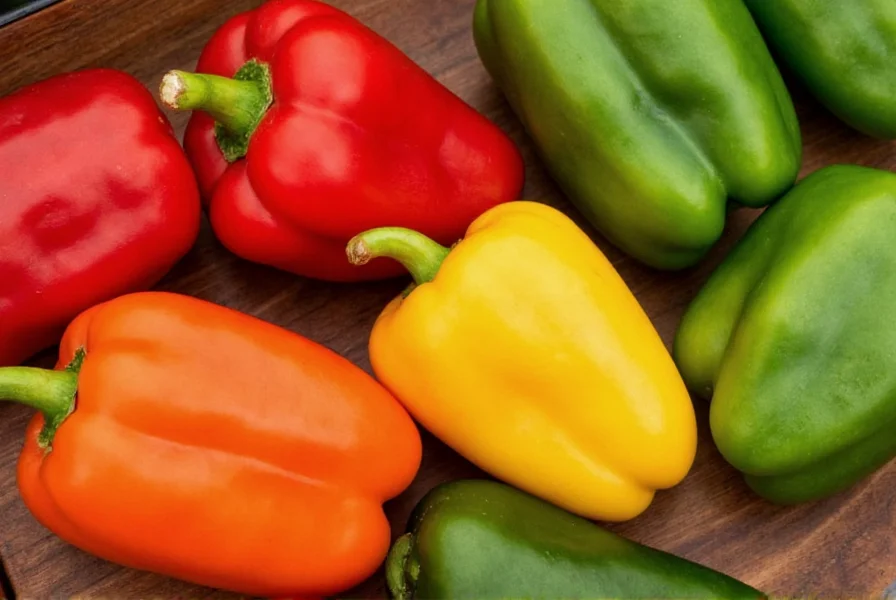Understanding pepper varieties through visual identification helps gardeners, chefs, and food enthusiasts select the right peppers for their needs. This comprehensive visual guide explores the most common pepper types with detailed descriptions of their physical characteristics, heat levels, and typical uses.
Pepper Classification Systems
Peppers belong to the Capsicum genus and are categorized primarily by species. The five domesticated species include Capsicum annuum (most common bell and chili peppers), C. frutescens (tabasco peppers), C. chinense (habaneros), C. baccatum (aji peppers), and C. pubescens (rocoto peppers). Visual identification requires examining multiple characteristics simultaneously.
| Pepper Classification | Key Visual Characteristics | Common Examples |
|---|---|---|
| Sweet Peppers | Thick walls, blocky shape, 3-4 lobes at base | Bell, Cubanelle, Pimento |
| Mild Heat Peppers | Thin to medium walls, tapered shape | Jalapeño, Anaheim, Poblano |
| Medium Heat Peppers | Slender shape, smooth or slightly wrinkled | Serrano, Cayenne, Hungarian Wax |
| Hot Peppers | Small size, tapered or lantern shape | Habanero, Scotch Bonnet, Thai chili |
| Extreme Heat Peppers | Small, often bumpy or wrinkled appearance | Ghost pepper, Carolina Reaper, Trinidad Scorpion |
Sweet Pepper Varieties Visual Guide
Sweet peppers contain zero Scoville heat units and feature thick walls perfect for stuffing and roasting. Their visual characteristics change dramatically as they mature from green to their final color.

Bell Peppers
The most recognizable sweet pepper has a blocky, cube-like shape with 3-4 lobes at the base. Immature peppers appear green, while mature varieties develop red, yellow, orange, or even purple hues. Red bell peppers typically indicate longer vine time and slightly sweeter flavor than green counterparts. The walls measure 1/4 to 1/2 inch thick, making them ideal for cooking applications requiring structure retention.
Cubanelle Peppers
Often called "Italian frying peppers," Cubanelles feature an elongated, tapered shape averaging 6-7 inches long. They transition from pale yellow-green to bright red when mature. With thinner walls than bell peppers, they're perfect for quick sautéing. Their visual similarity to mild Anaheim peppers causes frequent misidentification, though Cubanelles typically have a more curved shape and slightly brighter green color when immature.
Hot Pepper Varieties Visual Identification
Hot peppers contain capsaicinoids that create their signature heat. Visual identification of hot pepper varieties images requires attention to specific morphological features that correlate with heat levels.

Jalapeño Peppers
Measuring 2-3 inches long with a smooth, dark green skin that matures to bright red, jalapeños feature a distinctive tapered shape with a rounded tip. Look for characteristic white striations (corking) on the skin, which indicate maturity and often correlate with increased heat. The stem attachment creates a slight curve in most specimens. These medium-heat peppers (2,500-8,000 Scoville units) maintain their shape well when pickled, making visual identification possible even in processed forms.
Habanero Peppers
Recognizable by their lantern-like shape and thin walls, habaneros typically measure 1-2.5 inches long. They mature from green to vibrant orange or red, though specialty varieties appear in white, pink, purple, and chocolate colors. The surface often shows subtle wrinkles when fully mature. A key visual identifier is the distinctive fruity aroma visible in the pepper's glossy skin texture. With heat levels ranging from 100,000-350,000 Scoville units, proper visual identification prevents accidental consumption of extremely hot varieties.
Factors Affecting Pepper Appearance
Several environmental and genetic factors influence how pepper varieties appear in photographs and real life:
- Growing conditions: Soil quality, water availability, and sunlight exposure affect size, color intensity, and shape regularity
- Maturity stage: Most peppers change color dramatically as they ripen (green → yellow/orange/red)
- Cultivar differences: Within a single variety like jalapeño, multiple cultivars exist with visual variations
- Post-harvest processing: Drying, smoking, or pickling alters appearance significantly
When using pepper varieties images for identification purposes, always consider the maturity stage. For example, a green habanero looks completely different from its mature orange form, yet both belong to the same variety. Similarly, the same pepper variety grown in different regions may show size and shape variations while maintaining core identifying characteristics.
Practical Identification Tips
When examining pepper varieties images, focus on these key visual elements for accurate identification:
- Overall shape profile (blocky, tapered, elongated, lantern-shaped)
- Number and pattern of lobes at the blossom end
- Surface texture (smooth, wrinkled, glossy, matte)
- Stem attachment characteristics and curvature
- Color distribution patterns (even coloring vs. striping)
- Size relative to standard measurement references
For hot peppers specifically, the pod's internal structure visible in cross-section images provides additional identification clues. The placenta (white membrane inside) thickness correlates with heat concentration, though this requires cutting the pepper. When comparing pepper varieties images online, seek multiple angles and include a size reference like a ruler or common object for accurate visual assessment.
Using Pepper Images for Gardening Selection
Gardeners can leverage visual identification of pepper varieties when planning their crops. Different varieties have specific growth habits visible in plant images:
- Bush-type peppers (like many bell varieties) grow compactly to 18-24 inches
- Vining peppers (like some cayenne varieties) require staking and grow 3+ feet tall
- Fruit orientation: Some varieties hang downward while others stand upright on the plant
- Flower color: White flowers typically indicate C. annuum while purple flowers suggest C. chinense
When reviewing pepper varieties images for gardening purposes, look for pictures showing the entire plant with fruit, not just close-ups of individual peppers. This provides context about growth habit, yield potential, and space requirements that single-fruit images cannot convey.











 浙公网安备
33010002000092号
浙公网安备
33010002000092号 浙B2-20120091-4
浙B2-20120091-4